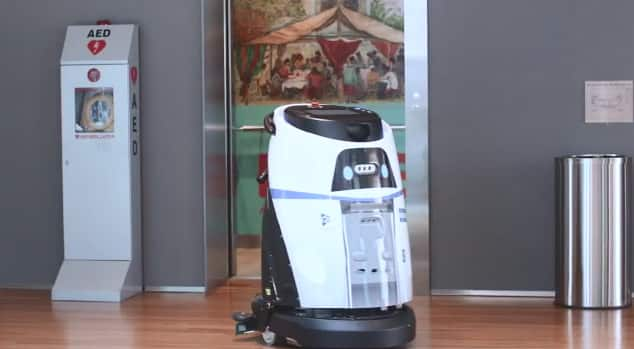First published in Business Times
August 27, 2022
I HAVE been fascinated by the sci-fi genre since I was young. While many ideas such as time machines remain out of reach, others, such as robots, have become much more mainstream. Singapore is now the second-most automated country in the world, behind South Korea. Our lion state has some 605 robots installed per 10,000 human employees, according to the International Federation of Robots. The number is far ahead of the global average of 126 industrial robots per 10,000 employees, and steadily increasing.
Most of these “robot workers” in Singapore are found in the high-tech manufacturing sector, where large-scale process automation has been commonplace since the early 2000s –a necessary evolution given the significant decline in our manufacturing labour force. The automation of Singapore’s production lines was made possible by economic incentives and investments to create a strong education and research ecosystem. According to EduRank, both the National University of Singapore and Nanyang Technological University are ranked among the top 10 in Asia (and top 30 in the world) for robotics. All this wouldn’t be possible without strategic support from the government in line with its Smart Nation ambitions.
Singapore has set its sights on becoming a world-class, tech-driven city-state. It is transforming itself to become a Smart Nation, harnessing technology to transform how its people and businesses live, work and play. So why are we not seeing more robots outside of factory floors?
Sure, we have seen cleaning robots in office buildings, delivery robots in hotels and concierge robots in malls. But most of these amount to small-scale deployment, hardly reaching the critical mass necessary to reap real productivity benefits. What are the challenges, and what do we need to realise the full potential of robotics and automation, particularly in the built environment sector?
Finding use cases that truly matter
Automation of the manufacturing sector was needed to avert an existential crisis. A recent Wall Street Journal article described Singapore as a rare case of a wealthy country that managed to reverse its factory downturn.
Many of the current robot use cases in the built environment sector, however, address problems that may not be deemed critical to building owners and therefore seem more of a “nice to have” or serve as a novelty factor for visitors. However, this is set to change as Singapore faces significant manpower challenges, particularly in the healthcare and hospitality sectors. For these sectors, critical business needs will demand an acceleration of robotics adoption.
Robots and accessibility
Many people may not be aware that one of the biggest challenges of robotics adoption is accessibility, particularly in a vertical city like Singapore. The effectiveness of a security patrol robot will be significantly curtailed if it can’t take the elevator to reach all the floors of a building, or open the heavy fire-rated doors in the service lobby, or travel up and down the stairwell.
Many buildings today are not designed for robotic operations. The corridors are not wide enough, our love for glass doors and walls interfere with the light-scanning navigation system of robots, and key infrastructure such as elevators and doors cannot exchange signals with robots to allow them to move through a building vertically and horizontally.
All parties involved in the design, build and operation of buildings (from architects, technical consultants to property managers) need to incorporate greater considerations of people and robot flows into building design and refurbishment briefs.
Levelling the playing field
There is no doubt that there is potential for robots to play a bigger role in the built environment sector in Singapore. This has led to the formation of many local robotic startups and an influx of robotic solutions from overseas. Therein lies another challenge –the robots have different functions, different operating systems and protocols, and different core technologies behind navigation and object sensing. The possible permutations can get overwhelming for building owners that want to introduce 2 or more robots from different companies into their buildings.
To level the playing field, Singapore’s National Robotics Programme supported the development of a first-in-the-world standardised Robotics Middleware Framework (RMF) which enables interoperability among heterogeneous robot fleets while managing free-roaming robot traffic. The development of the RMF was a collaborative effort between the public and private sectors, where companies such as KONE were able to contribute our expertise to a meaningful initiative that will shape our industry for years to come.
The RMF is essentially a set of rules that robots must abide by while sharing common resources such as space, building infrastructure systems (such as elevators, doors, etc) and other automation systems within the same facility. Within the RMF is Technical Reference 93 (TR93), which provides specific guidance for the communication protocols that robots, elevators and doors must adhere to. This will greatly reduce the technical huddles and costs for building owners to enable their fleet of robots to travel seamlessly through the building.
The built environment sector is notoriously slow to change. However, we are seeing a quickening of pace in the adoption of technology (including robotics and automation) in recent years due to the manpower crunch as well as strong push by various government agencies for the industry to embrace technology and innovation.
Case in point: At the end of July, the Building and Construction Authority of Singapore announced the launch of a regulatory sandbox, where building owners can apply to the authority for approval to reduce the frequency of elevator maintenance appointments from once a month to once a quarter if a remote monitoring and diagnostics solution is implemented in the property.
As someone passionate about technology and innovation and having worked in various capacities in the built environment sector for over 20 years, I am excited for what lies ahead!
Written by Sylvia Koh-Gratton, Managing Director of KONE Singapore

